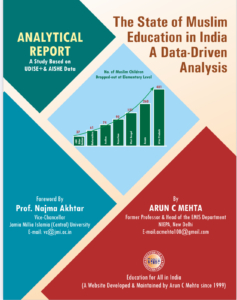AI in Indian Schools: A Simple Guide for Students and Teachers
Artificial Intelligence (AI) is revolutionizing education in India, making learning exciting but also raising concerns about cheating. Tools like ChatGPT can help with homework, but schools are setting clear rules to keep things fair. Inspired by global trends and India’s education landscape, this guide covers how students can use AI responsibly, creative teaching ideas, and how AI supports Education for All in India’s mission to ensure every student gets a fair chance to learn. Let’s explore!
What Can Students Do with AI? (And What’s Not Okay?)
Hey students! AI is like a super-smart study buddy, but Indian schools have rules to ensure honesty. Always check with your teacher, as rules vary. Based on insights from Indian education experts and policies like the National Education Policy (NEP) 2020, here’s a clear list:
Okay to Do (Permissible Activities)
- Brainstorm ideas: Use AI tools like ChatGPT to suggest essay topics or outlines. Rewrite everything in your own words!
- Summarize complex texts: Get quick overviews of tough books or articles, but mention you used AI.
- Research support: Ask AI for facts or examples, then verify them yourself.
- Edit your work: Use tools to improve grammar or sentence flow, as long as the ideas are yours.
- Practice with quizzes: Let AI create study quizzes or explain mistakes to boost learning.
Not Okay to Do (Non-Permissible Activities)
- Submit AI-written work: Don’t let AI write your essays, reports, or answers—it’s cheating.
- Copy without credit: Always say when you’ve used AI; don’t pass its work as yours.
- Use AI in exams: No AI during tests or in-class tasks—schools may block access.
- Misuse translation tools: If you write in your language and use AI to translate, ensure it doesn’t alter your ideas.
- Hide AI use: Don’t pretend AI-generated content is your original work.
These guidelines, drawn from Indian education trends and global practices, help keep learning fair.[3][1] Learn more about NEP 2020 at Ministry of Education, India.
How Teachers Are Making Classes Fun and Fair with AI
Teachers in India are finding smart ways to use AI, prevent cheating, and make classes engaging, even in crowded classrooms. Here are simple ideas inspired by global trends and Indian studies:
- In-class writing and discussions: Students write essays or explain concepts in class, reducing AI misuse.
- Personalized learning: AI tailors lessons—like basic math for some, advanced problems for others.
- Quick grading tools: AI grades assignments fast, freeing teachers for creative teaching.
- Flipped classrooms: Students watch AI-made videos at home, then discuss in class for better teamwork.
- Virtual assistants: AI answers student queries anytime, acting like a 24/7 tutor.
- Interactive quizzes and games: AI creates fun tests or learning games with instant feedback.
- Teacher training: Online AI courses help teachers blend tech with traditional methods.
These methods address India’s challenges, like large class sizes, and make learning exciting.[12][15] Explore AI teaching innovations at AICTE India.
Are Indian Schools, Students, and Teachers Ready for AI?
AI is promising, but India’s digital divide—where urban areas have better tech than rural ones—creates challenges. Here’s the current picture:
- Schools: Around 60% of urban schools have AI guidelines, but only 30% of rural schools do. NEP 2020 promotes AI, but limited internet and devices slow progress.[23]
- Students: 80% of city students use AI for homework, compared to 40% in rural areas. Training helps them use AI ethically.
- Teachers: About 50% feel confident with AI after free workshops, but many need more skills. AI saves time, though some worry about cheating or job security.
Initiatives like Digital India and 2025 education budgets are improving access, helping more schools adopt AI fairly.[20][24] Check out Digital India’s efforts at Digital India Portal.
Cool AI Tools for Students and Teachers
Here’s a list of AI tools for Indian students and teachers. Most have free versions and work on phones, making them accessible!
For Students
- ChatGPT (OpenAI): Brainstorm, summarize, or quiz yourself. Free basic; Paid ₹1,600/month for advanced features. ChatGPT
- Grammarly: Fix grammar, improve sentences. Free; Paid ₹1,000/month for extras. Grammarly
- Doctrina AI: Summarize notes, create flashcards. Free trial; Paid from ₹500/month.
- Google Gemini for Education: Essay outlines, study aids. Free via Google for schools/students. Google for Education
- Duolingo: Learn languages with AI chats. Free; Paid ₹400/month for ad-free. Duolingo
For Teachers
- MagicSchool.ai: Plan lessons, create quizzes. Free basic; Paid ₹800/month for more. MagicSchool
- Brisk Teaching: Auto-grade, make content. Free for educators! Brisk Teaching
- TeachFX: Track student discussions. Free trial; Paid from ₹1,200/month. TeachFX
- Gradescope: Fast grading for assignments. Free for small use; Paid ₹2,000+/month for big classes. Gradescope
- Curipod: Fun AI lessons and games. Free; Paid ₹600/month for extras. Curipod
Start with free versions and follow your school’s rules!
How AI Supports Education for All in India
The Education for All in India website is about giving every student a fair shot at learning. AI helps make this happen! Free tools like Google Gemini and Brisk Teaching offer personalized learning for rural and low-income students, even with limited tech. Clear AI rules prevent cheating and promote honesty. Government programs like NEP 2020 and Digital India are bringing tech to more schools, ensuring no one is left behind. AI can make Indian classrooms inclusive, engaging, and fair for all!
Concluding Observations
AI is transforming Indian education by personalizing learning and saving teachers time. However, the digital divide—where rural schools lack devices and internet—remains a challenge. Clear, consistent AI rules are essential to guide students and avoid unfair cheating accusations. Teachers are innovating by blending AI with traditional methods, making classes fun and effective. With government support through Digital India and free AI tools, India is moving toward inclusive education. By using AI responsibly, students and teachers can create a brighter, fairer future, perfectly aligning with Education for All in India’s vision.
FAQs: Common Questions About AI in Indian Education
1. Is using AI like ChatGPT always cheating?
2. How can I use AI without getting in trouble?
Be honest—say when you use AI, like for summarizing or editing. Use it as a helper, not a writer. For example, ask ChatGPT for essay ideas, then write in your own words. Follow your teacher’s guidelines to stay safe.
3. Why do some teachers allow AI and others don’t?
Schools in India are still figuring out AI rules. Some teachers love AI for study aids, while others worry about cheating. NEP 2020 encourages AI use, but each school or teacher can set their own rules. Ask for clarity if you’re confused!
4. Can rural students use AI with limited internet?
Yes! Many tools, like Google Gemini or Duolingo, have free versions that work on phones with low data. Government programs like Digital India are also bringing better internet to villages. Start with free, offline-friendly tools.
5. How can teachers use AI if they’re not tech experts?
No worries! Free tools like Brisk Teaching or MagicSchool.ai are easy to use and come with tutorials. Free online courses from AICTE or Digital India can also teach you AI basics. Start small, like using AI to grade quizzes.
6. What if I’m accused of cheating with AI by mistake?
AI detectors aren’t perfect, so mistakes can happen. Talk to your teacher honestly and show your work process (like drafts or notes). Clear school rules, like those suggested by NEP, help avoid unfair accusations.
For more AI tips, visit AICTE India or Digital India.


